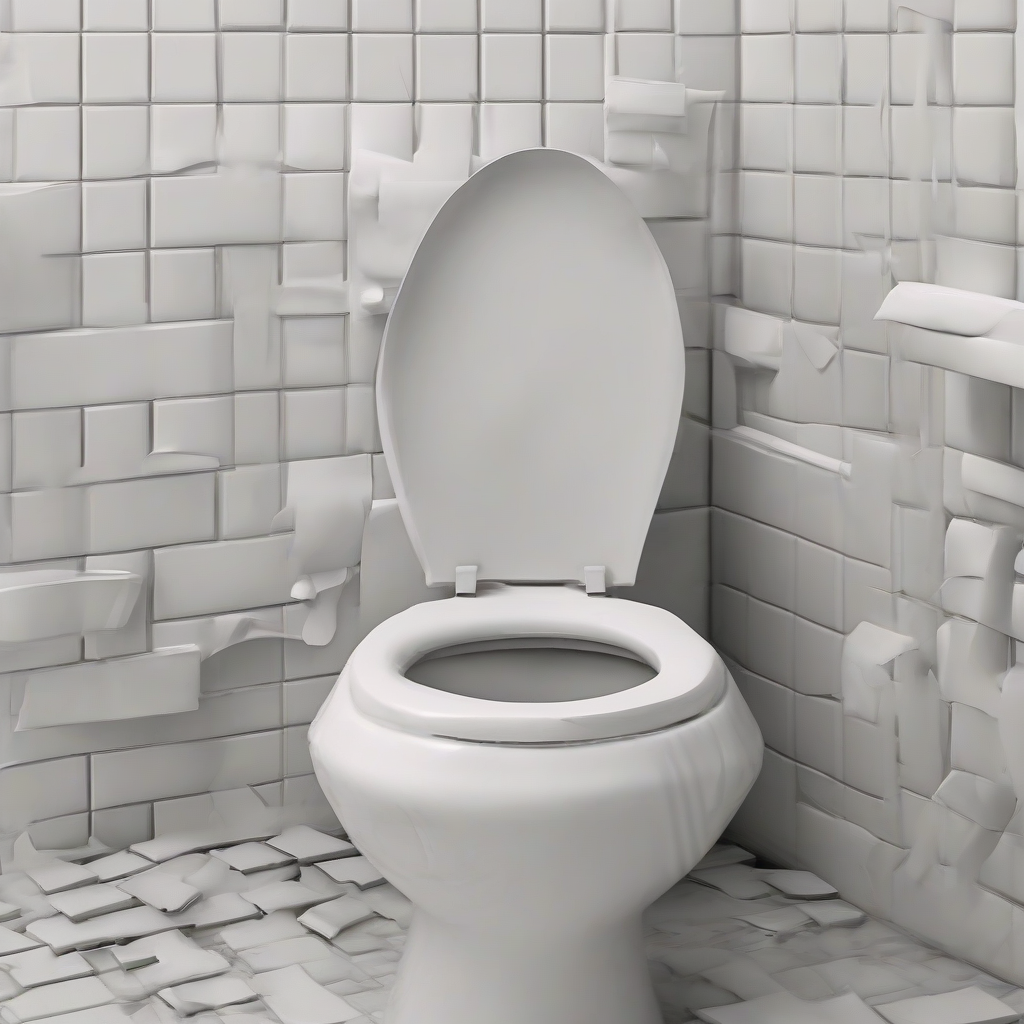
Toilet Seal Broken: A Comprehensive Guide to Diagnosis, Repair, and Prevention
A broken toilet seal, often referred to as a wax ring failure, is a common plumbing problem that can lead to significant inconvenience and water damage. This comprehensive guide will walk you through the process of identifying a broken seal, understanding the causes, implementing effective repair strategies, and ultimately preventing future occurrences.
Identifying a Broken Toilet Seal
Several telltale signs indicate a compromised toilet seal. These include:
- Water leaking from the base of the toilet: This is the most obvious symptom. Water may seep steadily or only appear after flushing.
- Musty odor around the toilet: Persistent dampness can lead to mold and mildew growth, resulting in a noticeable unpleasant smell.
- Water stains or discoloration on the floor: These are often indicators of prolonged leakage that may not be immediately visible.
- Loose or wobbly toilet: A failing seal can compromise the stability of the toilet, making it feel unsteady.
- Gurgling sounds from the drain: This suggests air is entering the system through the damaged seal.
- Slow draining toilet: While not always indicative of a seal problem, it can be a contributing factor, especially if combined with other symptoms.
If you observe any of these signs, it’s crucial to address the issue promptly to prevent further damage and potential costly repairs.
Understanding the Causes of a Broken Toilet Seal
Several factors can contribute to a broken toilet seal. These include:
- Age and wear: Wax seals, being made of wax, are susceptible to deterioration over time. Their lifespan can vary depending on water quality and usage frequency.
- Improper installation: An incorrectly installed toilet can put excessive stress on the wax seal, leading to premature failure.
- Excessive force or impact: Dropping heavy objects near the toilet or forcefully moving the fixture can damage the seal.
- Settlement of the floor: Over time, the floor may settle unevenly, placing stress on the seal and causing it to crack.
- Water pressure fluctuations: Significant changes in water pressure can put extra strain on the seal.
- Chemical corrosion: Exposure to certain cleaning chemicals can weaken the wax seal over time.
- Previous repairs: If the toilet has been previously repaired or replaced, the seal may have been damaged during the process.
Understanding these causes helps in taking preventative measures and choosing the most appropriate repair strategy.
Repairing a Broken Toilet Seal
Repairing a broken toilet seal typically involves replacing the wax ring. This is a relatively straightforward DIY project for those with basic plumbing skills. However, if you’re uncomfortable undertaking this task, it’s best to call a professional plumber.
Steps to Replace a Wax Ring:
- Turn off the water supply: Locate the shut-off valves for the toilet and turn them off completely.
- Flush the toilet: This will empty the tank and bowl, reducing the amount of water you’ll need to deal with.
- Disconnect the water supply line: Carefully disconnect the water supply line from the toilet tank.
- Disconnect the toilet from the floor: Unscrew the bolts securing the toilet to the floor. You may need a wrench or pliers for this step.
- Lift the toilet: Carefully lift the toilet from the floor. The old wax ring will likely stick to either the toilet flange or the toilet base. Remove the old wax ring carefully.
- Clean the flange and toilet base: Thoroughly clean the toilet flange and the bottom of the toilet to ensure a proper seal for the new ring.
- Install the new wax ring: Carefully place the new wax ring on the toilet flange, ensuring it is centered and properly seated.
- Lower the toilet onto the flange: Gently lower the toilet onto the flange, ensuring it’s seated evenly.
- Reconnect the bolts: Tighten the bolts securing the toilet to the floor, but avoid over-tightening.
- Reconnect the water supply line: Reconnect the water supply line to the toilet tank.
- Turn on the water supply: Turn the water supply back on and check for leaks.
- Flush the toilet several times: This will help to ensure the seal is properly formed.
Important Note: Always use a high-quality wax ring for a durable and reliable seal. Consider using a beeswax ring for added longevity and improved sealing properties. Using silicone sealants is also an option but requires careful application to avoid creating a mess or damaging the toilet base.
Preventing Future Toilet Seal Failures
Preventing future problems involves proactive maintenance and careful handling of the toilet. Consider these preventative measures:
- Regular inspection: Periodically check around the base of the toilet for signs of leaks or water damage.
- Avoid excessive force: Don’t apply excessive force when using or cleaning the toilet.
- Use appropriate cleaning products: Avoid harsh chemicals that can damage the wax seal.
- Address floor settling: If you notice floor settling, consult a professional to address the underlying issue.
- Consider a flange repair: If the toilet flange is damaged or corroded, consider replacing it during the wax ring replacement process. A damaged flange can lead to repeated wax ring failures.
- Regular maintenance of the toilet’s internal components: A properly functioning toilet system reduces the strain on the wax seal. Consider regular cleaning of the tank and flapper mechanism.
By following these preventative measures, you can significantly extend the lifespan of your toilet seal and avoid costly and inconvenient repairs.
When to Call a Plumber
While replacing a wax ring is often a manageable DIY task, there are situations where professional help is necessary:
- Extensive damage: If the damage is significant, involving cracks in the toilet flange or extensive water damage, a plumber is necessary.
- Lack of skills or experience: If you’re uncomfortable performing plumbing work, it’s best to leave it to the professionals.
- Unusual or persistent problems: If the leak persists after attempting a repair, a plumber can diagnose and solve underlying problems.
- Complex situations: If the toilet is difficult to access or remove, professional assistance might be required.
Remember, preventing water damage is crucial. Addressing a broken toilet seal promptly minimizes the risk of costly repairs and protects your home from potential structural damage. Prioritize regular maintenance and don’t hesitate to call a professional when needed.


